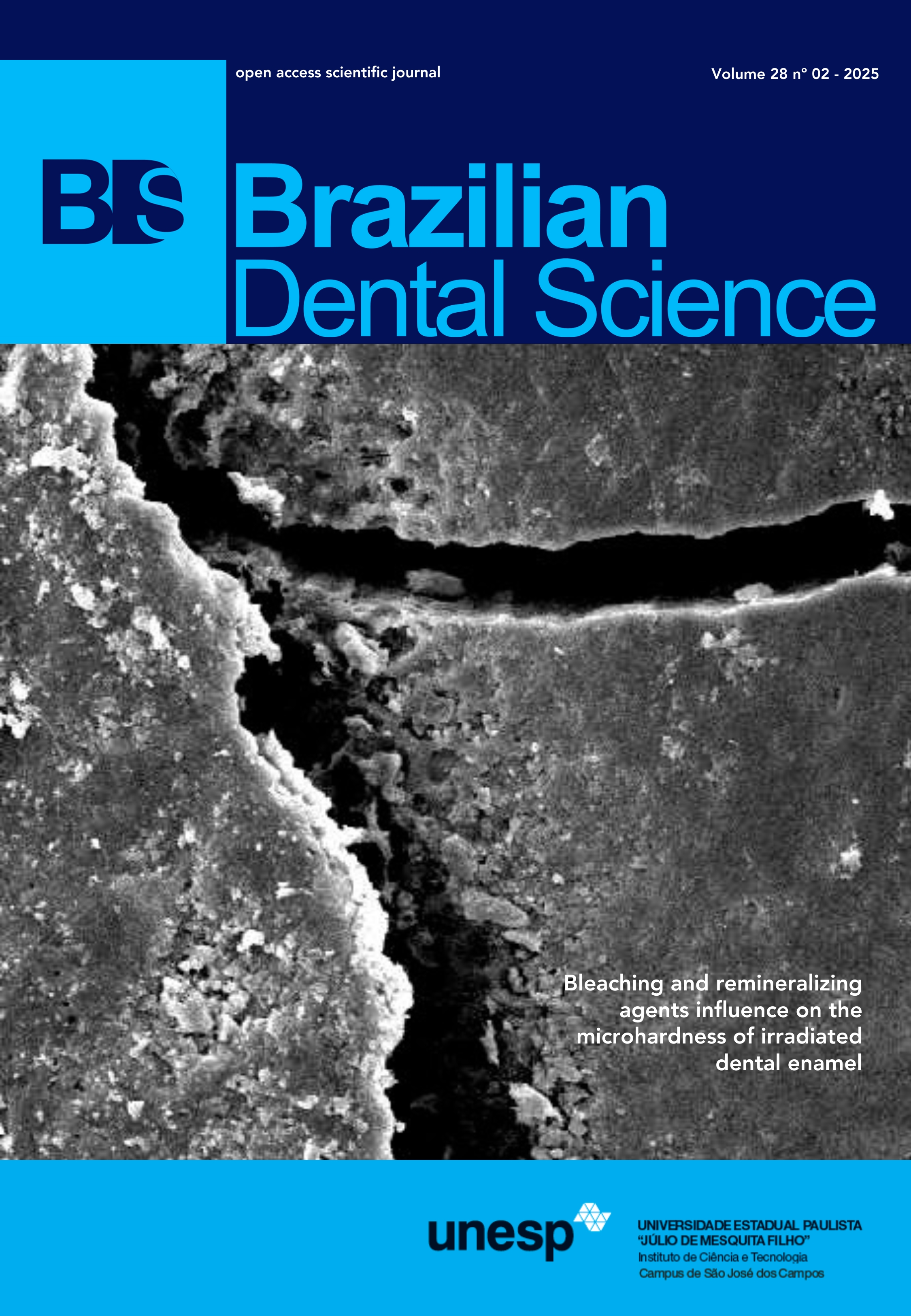Analysis of condylar positioning in the temporomandibular joint cavity using interocclusal devices in patients with temporomandibular dysfunction – a case-control clinical study
DOI:
https://doi.org/10.4322/bds.2025.e4362Resumo
Objective: This cross-sectional, case-control clinical study evaluated the condylar position in sagittal tomographic images of temporomandibular joints (TMJs) among symptomatic and asymptomatic patients with temporomandibular disorders (TMD) during maximum habitual intercuspation (MHI) and while using inclined interocclusal devices with anterior guidance (IID) or horizontal interocclusal devices (HID). Material and Methods: The sample included 60 symptomatic patients and 10 asymptomatic controls diagnosed with muscular-type TMD using the RDC/TMD criteria. All participants were dentate, with occlusal stability, and adequate vertical dimension. Impressions and casts were mounted on semi-adjustable articulators, and IID and HID were fabricated using selfpolymerizing acrylic resin and aluminum. Cone beam tomography was used to assess TMJ images during MHI with each device, measuring anterior (A), superior (C), and posterior (P) spaces (mm) between the condyle and temporal bone. The data were analyzed using Student’s t-test for intergroup comparisons, ANOVA with Bonferroni correction, and Pearson’s correlation for intragroup analysis. Results: Fifty-two symptomatic patients completed the study. No statistically significant differences were found between TMD patients and controls regarding the condylar position in different occlusal situations. Within the TMD group, the condyles were positioned more posteriorly in both MHI and IID, while they were more centralized with HID. The anterior space showed similar changes across MHI, IID, and HID, and the superior space varied proportionally with the posterior space in the three occlusal conditions. Control patients exhibited smaller and more consistent A and P measures than C, indicating centralized condyles. Positive correlations were observed between the different space measurements and occlusal positions. Conclusion: Condylar position did not predict the presence of TMD. Symptomatic TMD patients tended to have posteriorly positioned condyles in MHI and IID, while HID centralized them. Asymptomatic patients exhibited centralized condyles.
KEYWORDS
Mandibular condyle; Masticatory muscles; Occlusal splints; Temporomandibular joint disorders; Tomography.
Downloads
Downloads
Publicado
Como Citar
Edição
Seção
Licença
Copyright (c) 2025 Antonio Adamastor Corrêa Júnior , Ariel de Vaconcelos Barbosa, João Felipe Barboza de Oliveira, Lídia Maria Pinto de Oliveira, Paulo Goberlânio de Barros Silva, Regina Gláucia Lucena Aguiar Ferreira, Lívia Maria Sales Pinto Fiamengui, Karina Matthes de Freitas Pontes

Este trabalho está licenciado sob uma licença Creative Commons Attribution 4.0 International License.
TRANSFERÊNCIA DE DIREITOS AUTORAIS E DECLARAÇÃO DE RESPONSABILIDADE
Toda a propriedade de direitos autorais do artigo "____________________________________________________________________" é transferido do autor(es) para a CIÊNCIA ODONTOLÓGICA BRASILEIRA, no caso do trabalho ser publicado. O artigo não foi publicado em outro lugar e não foi submetido simultaneamente para publicação em outra revista.
Vimos por meio deste, atestar que trabalho é original e não apresenta dados manipulados, fraude ou plágio. Fizemos contribuição científica significativa para o estudo e estamos cientes dos dados apresentados e de acordo com a versão final do artigo. Assumimos total responsabilidade pelos aspectos éticos do estudo.
Este texto deve ser impresso e assinado por todos os autores. A versão digitalizada deverá ser apresentada como arquivo suplementar durante o processo de submissão.




























